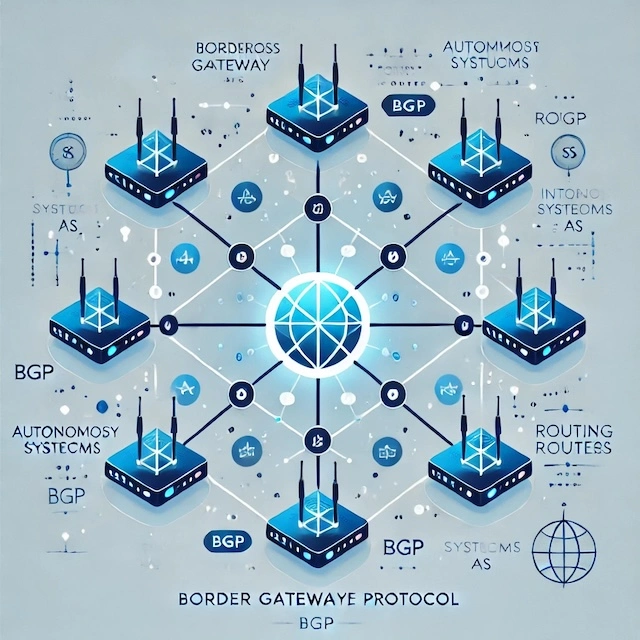
Introduction
Have you ever wondered how the internet connects billions of devices across the globe seamlessly? The answer lies in the powerful networking protocol called Border Gateway Protocol (BGP). If you’re new to networking, don’t worry! This guide will help you understand BGP in the simplest way possible.
What is BGP?
Border Gateway Protocol (BGP) is the system that enables different networks (or Autonomous Systems – AS) to communicate with each other. In simpler terms, BGP is the internet’s postal service, helping data packets find the best routes to their destinations.
Imagine BGP as a GPS navigation system for the internet. Just as GPS finds the best roads for your journey, BGP determines the most efficient path for data to travel between different networks.
Why is BGP Important?
The internet is made up of thousands of independent networks run by ISPs (Internet Service Providers), large corporations, and data centers. These networks must exchange information efficiently, and that’s where BGP comes in. It ensures:
- Efficient Routing: Data finds the fastest, most reliable path.
- Scalability: It supports large and complex networks.
- Redundancy: If one path fails, BGP finds an alternative route, ensuring continuous connectivity.
How Does BGP Work?
- Autonomous Systems (AS): The internet is divided into Autonomous Systems (AS)—groups of IP networks under single management.
- BGP Routers Exchange Information: Routers in different AS exchange routing information through BGP.
- Best Path Selection: BGP selects the most optimal route based on various factors like path length, reliability, and policies.
Real-World Example
Think of BGP like airline routes. If you want to fly from New York to London, there are multiple airlines and routes available. Airlines choose the best routes considering factors like distance, fuel efficiency, and air traffic. Similarly, BGP ensures data takes the best available route between networks.
Common BGP Terms Explained Simply
- Prefix: A group of IP addresses belonging to a network.
- Autonomous System (AS): A network or group of networks managed by an organization.
- Routing Table: A list of possible routes to different networks.
- Peering: The process where two networks agree to exchange traffic.
Challenges with BGP
While BGP is incredibly powerful, it does have some challenges:
- Security Risks: Incorrect routing announcements can disrupt internet traffic (e.g., BGP hijacks).
- Slow Convergence: Changes in routing take time to propagate.
- Complex Configuration: Requires careful management to avoid misconfigurations.
Conclusion
BGP is the backbone of the internet, enabling different networks to communicate and ensuring seamless connectivity. While it might sound technical at first, thinking of it as a GPS or airline system helps make it more understandable.
Understanding BGP is crucial for network engineers, ISPs, and IT professionals. Even if you’re not in networking, knowing how the internet routes your data can be fascinating!
AI renaissance! AI sparks joy through its perfect automation.